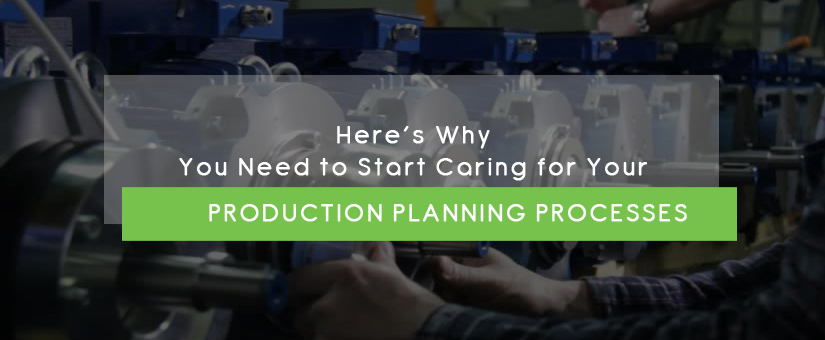A manufacturing business has to manage a variety of processes- inventory management, scheduling, labor and equipment management, to name a few. If these processes don’t work in perfect harmony, then it can lead to a massive waste of company time and resources which in turn can affect the cash flow itself.
A business plan is not the same as production plan, and while most companies have a good sense about the former, the latter gets neglected completely.
Production Planning: Need of the Hour!
Without production planning, you basically operate on assumptions and predictions. While this strategy can work for a while, once your business starts getting bigger, running production to its full efficiency can easily become a herculean task because of the following:
- High labor costs due to poor time management and manufacturing delays
- Un-optimized equipment usage which limits production capacity
- Delayed deliveries which can affect clients’ relationships and hurt business in turn.
As you can see, without proper production planning, you can go astray and end up in a management mess. To get on top of production, you should take control immediately.
Basics of Production Planning
The following are some of the main components that should be included in your production planning:
- Material and Equipment Procurement:
You must set up a system which allows you to intimate your suppliers in advance when you need new material. Similarly, custom-made tools and equipment are required, the supplier should be intimated way ahead in time.
- Invoicing and Pricing:
When the production line is active, you need to supervise the work occasionally. The rest of the time you have to address invoicing, expenses, and pricing new products. So, make sure you have a service that can help you manage all this easily.
- Demand Forecasting and Inventory Prioritization:
Demand forecasting allows you to maximize production capacity in a way that few products are left unsold at the end of every cycle. All you have to do is check your sales history to predict future sales. In the same way, you have to prioritize inventory so that only those products are produced that get the best value without affecting your relations with other buyers who have placed orders for different products. A balance has to be created so that you know exactly how many units of product A is to be produced along with product B and C.
- Bottlenecks:
As mentioned earlier, when production doesn’t work as a cohesive unit, then delays can become more frequent and slow down work which affects revenues and profits. Thus, a system must be set up that can minimize bottlenecks by ensuring seamless flow of information between your vendors and clients.
A Complete Solution
You are free to set up your own production planning system however you like. That said, it would be the best in most cases to just pick a good ERP solution that provides an organized and automated system that brings all the components of production planning under one roof.
Software for Production Planning (preferably cloud-based as it’s cheaper and requires no maintenance) can streamline your production by offering features like:
- Inventory management
- Deficiency tracking
- Purchase cycle tracking
- Detailed performance reports
Remember, it’s not enough to build a scalable and flexible production line, for you need to embrace a next-gen planning tool that can optimize sales, manufacturing, and invoice tracking. This will help you identify the leakages in your cash flow and meet the growing demands of your business easily.
